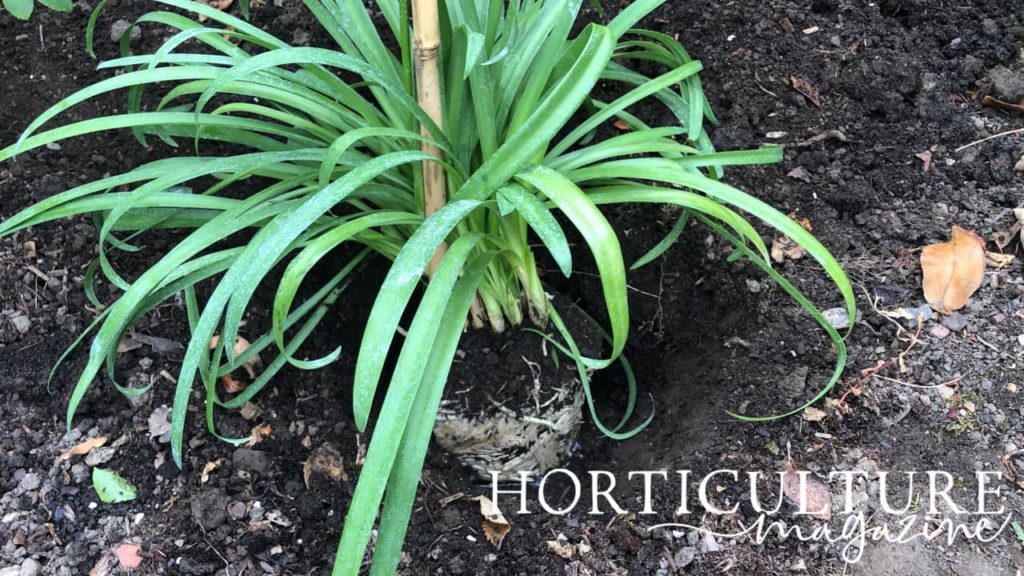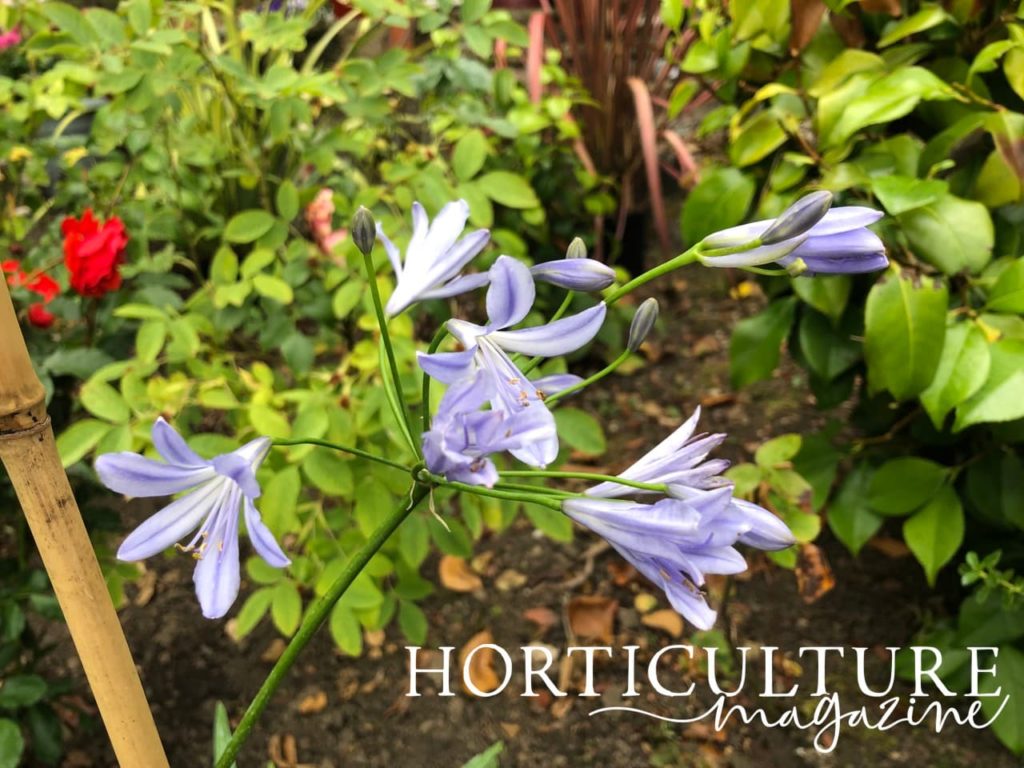perennial > AGAPANTHUS
IN THIS GUIDE
AGAPANTHUS GUIDES

Common ProblemsContainer GrowingDeadheadingPropagation – Growing From Seed – DividingPruningRepottingVarietiesWinter Care
Agapanthus , or ‘ African Lily ’ , is a democratic moulding and container plant , know for its tall root ending in spherical flower heads in shade of blue , white and purple , which bloom from mid - summer until early autumn .
The Agapanthus plant originates from Southern Africa , and therefore typically prefers a hot and cheery climate .

A.‘Midnight Blue’
Despite this , it is potential to grow it successfully in many UK gardens , providing you choose the right positioning , and offer your plants adequate wintertime protection .
For this guide , we interview specialist Agapanthus growerPatrick Fairweather . He is the MD ofFairweather ’s Nursery , home base to aPlant Heritage National Collection of Agapanthus – as well as being Chair of the RHS Agapanthus AGM trial .
“ Agapanthus reminds me of gay summertime Clarence Day , ” Patrick state .

“ They used to be just blue and white , but now , with modernistic rearing , we have a blanket ambit of colours , flowering times and habits . ”
If you ’re prepared to put the elbow grease in , you ’ll be rewarded with spectacular displays of exotic - looking grim , purple or ashen flowers , at an eye - catching acme .
Some change are also evergreen , so will provide attractive green foliage twelvemonth - round ( if not covered for winter ) .

Overview
PreferredFull Sun
ExposureSheltered
Height0.5 – 1 M

Spread0.1 – 0.5 M
Bloom TimeJune – September
PreferredMost Soil Types

MoistureMoist but well run out
pHAny
Agapanthus is a herbaceous perennial , and part of the Amaryllidaceae family.1Amaryllidaceae . ( n.d . ) . Pacific Bulb Society . Retrieved March 9 , 2023 , fromhttps://www.pacificbulbsociety.org/pbswiki/index.php/Amaryllidaceae

There are hundreds of cultivar and hybrids within the genus , cast from 20 centimetre dwarf smorgasbord to ace that turn to 1.5 m tall .
Although it originates from Southern Africa , Agapanthus has become naturalize in various other state , including Britain and Australia.2Agapanthus.(n.d . ) . Kew Royal Botanic Gardens . Retrieved March 9 , 2023 , fromhttps://powo.science.kew.org/taxon/urn:lsid:ipni.org:names:331131-2
The flower of Agapanthus plants are most often shades of blue , but can also be lavender , purple or blank .

They are trump - shape , and form in with child celestial sphere at the ends of tall stems , above the green leaf .
The flower heads will prove an inst hit with birds and butterfly into your garden .
Other name commonly used for Agapanthus admit ‘ African Lily ’ and ‘ Lily of the Nile ’ – despite the fact that it ’s not really a lily .

A.‘Midnight Blue’
Habitat & Growing Conditions
Agapanthus ’ instinctive habitat is Southern Africa , where it grow in hot and sunny condition , with productive soils .
“ Agapanthus love full sun and free draining soil that mirror the plant ’s native conditions , ” says Patrick .
Many varieties therefore do not get by well in the cold , and need to be shelter during winter .

Due to its ironical natural home ground , Agapanthus can stomach time period of drought – although you should not allow it to dry out completely .
Agapanthus plants can be deciduous or evergreen – the deciduous variety tend to be sturdy , whereas the evergreen are more tender .
consider underwrite evergreen plant in winter , or grow them in a container , so that you may bring them into a cool greenhouse to protect them from icing .

Planting Agapanthus
The best clock time to imbed Agapanthus is in give , around April time .
attempt to wait until the last winter frosts have passed – this is especially rightful for the less brave , evergreen varieties .
Make certain to cover the root with at least 5 centimetre of stain upon planting .

If you want to make life easier for yourself , you may also buy pot Agapanthus plant in summer , from garden centres or specializer growers .
Keep them well - watered and mulch , to provide the plants to set up themselves .
Agapanthus Care
When growing Agapanthus , it is important to pick out a mixture to beseem your situation .
provide your garden is sheltered , and you do n’t live in too cold an area , you should be able to grow a hardy , deciduous diversity in your garden , without move or covering it during winter .
Fully hardy varieties of Agapanthus includeA.‘Midnight Blue ’ andA.‘Blue Giant ’ .
If you do n’t have a sheltered garden , or you wish well to grow an evergreen salmagundi , your plant will probably call for to be moved into a coolheaded greenhouse or sheltered location over winter .
It is therefore a beneficial idea to grow less audacious varieties of Agapanthus in containers in the UK .
Agapanthus prefer full Sunday , so choose a sunny , south - face spot in your garden in which to plant it or position the container .
Plant in a loam - establish compost , and check that the skunk has good drain , as the plant life does not like waterlogged soil .
irrigate the plant on a regular basis during the growing time of year of the first year – Agapanthus blooms from mid - summertime until other autumn , depend on the assortment .
Once the plant is established , it should only need lacrimation in the case of a in particular hot or ironical summer .
If you ’re growing your Agapanthus in a garden border , you could feast it a balanced fertiliser once a twelvemonth in spring , to encourage bloom .
“ If your Agapanthus miss flower , a high - potassium hydroxide provender should help , ” Patrick suggests .
If your plant is in a container , feed it a liquid plant food every 2 week from April to July .